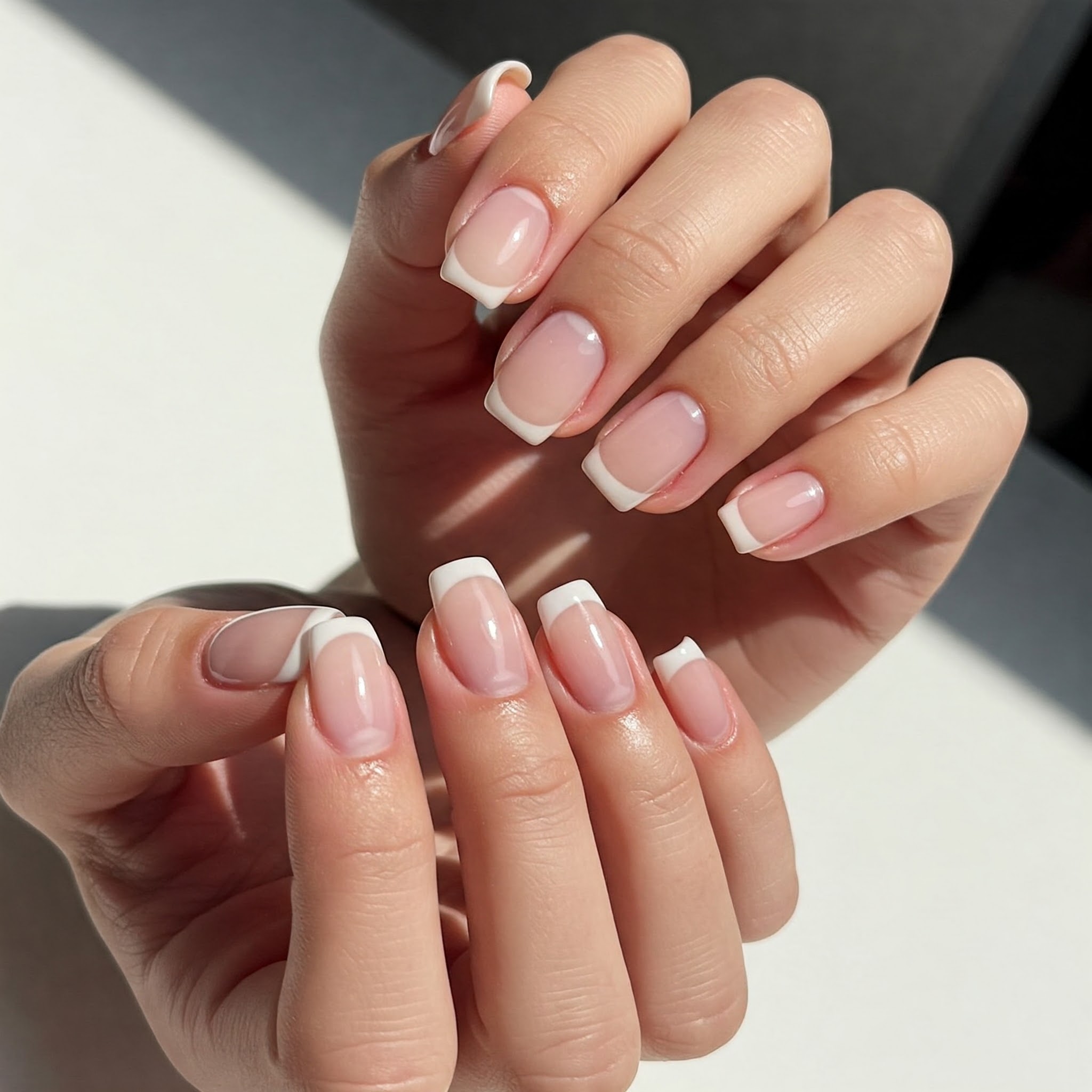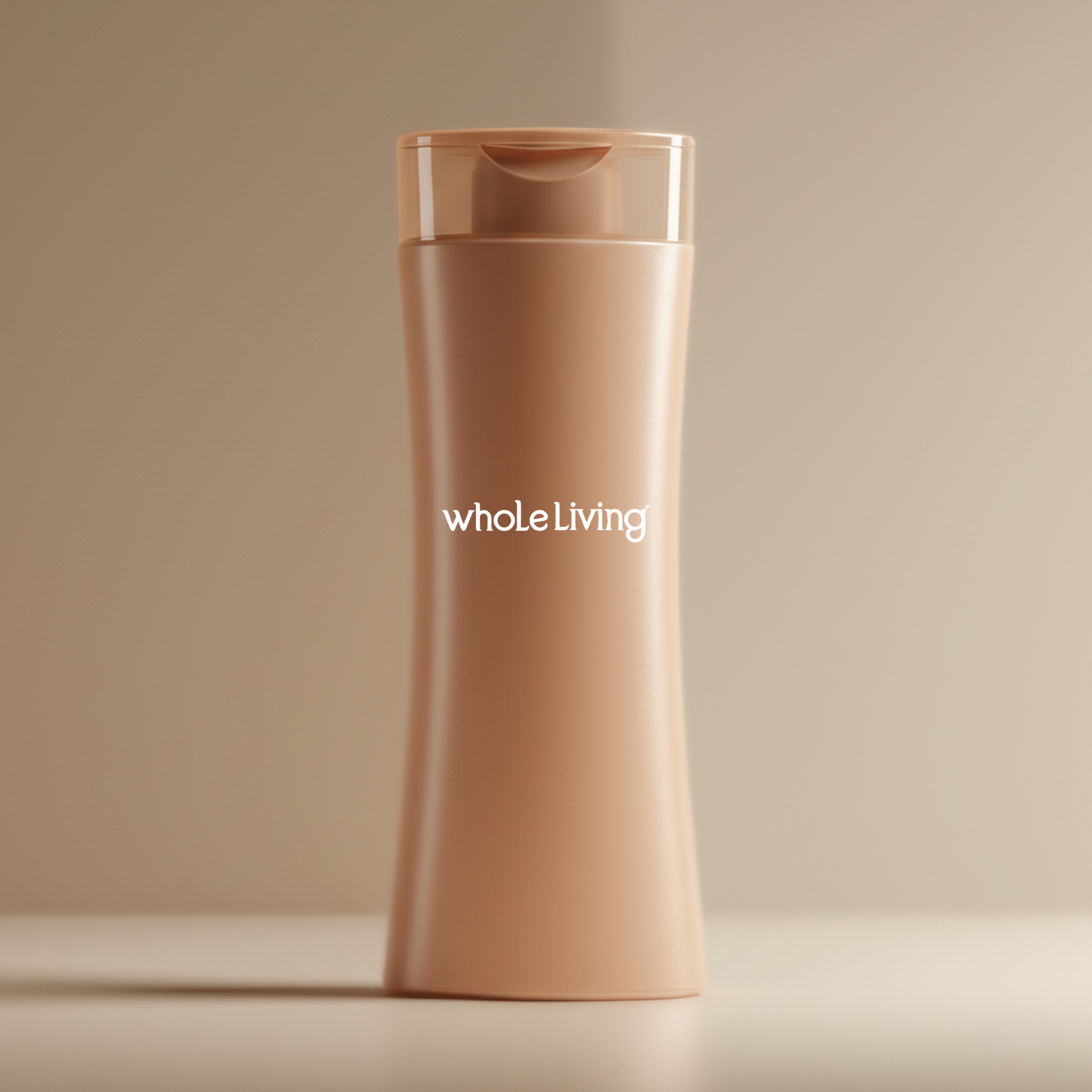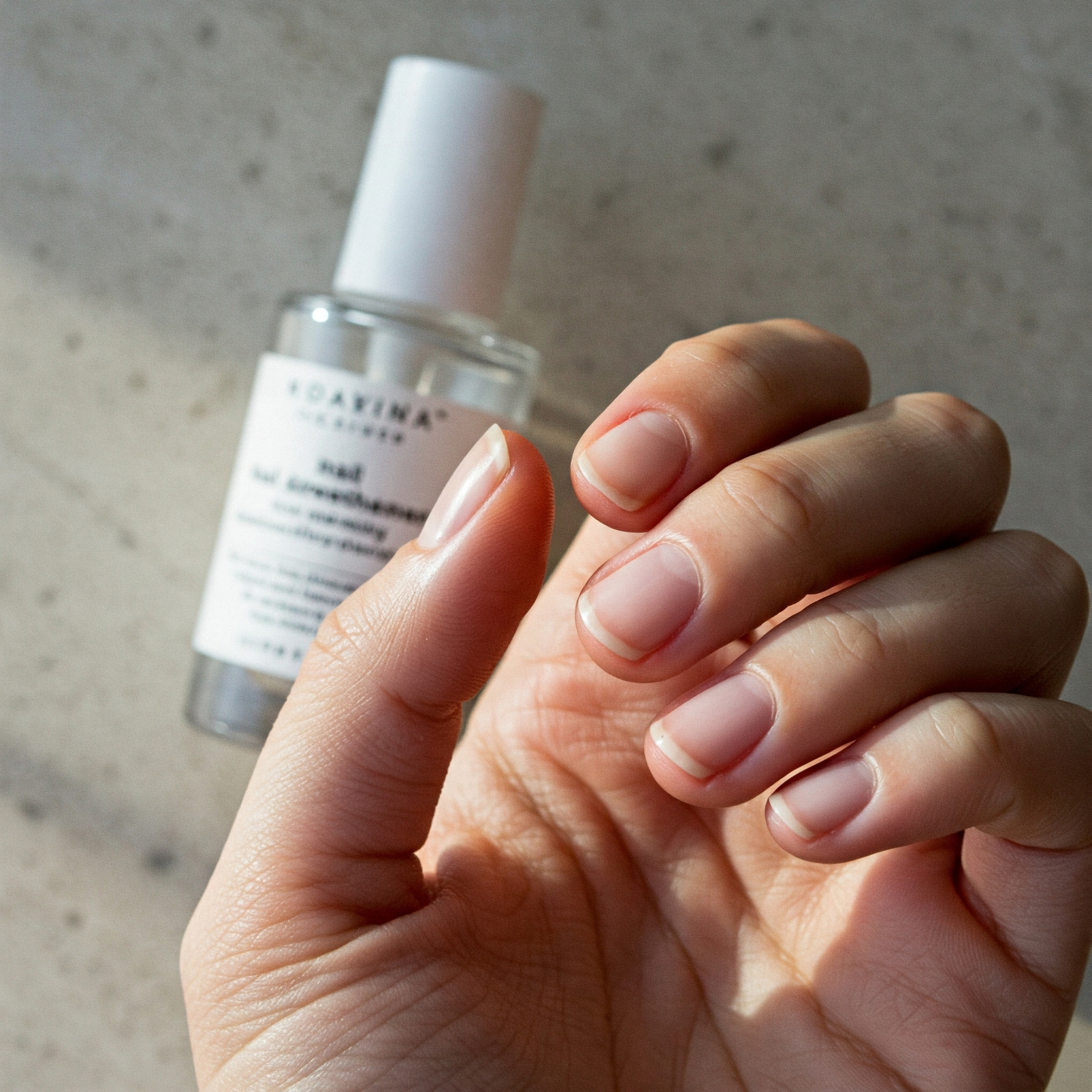In This Article
Let’s begin with something gentle—an invitation, really. You don’t need to chase the perfect core or push through discomfort to earn strength. Your body already holds so much quiet power, especially in the places we often overlook. One of those quiet heroes? The oblique muscle. Also known as the abdominal oblique muscle, it is located along the sides of your abdomen and plays a bigger role than you might realize.
The oblique muscle is essential for balance, breathing, posture, and almost every twist or reach you make. It doesn’t just sculpt your waistline—it stabilizes your core, connects your upper and lower body, and keeps you upright. This guide isn’t about dramatic transformation. It’s about tuning in, understanding your muscles, and learning to move in a way that feels nourishing.
Think of this as a conversation between you and your body—no pressure, no pain, just presence. With each section, we’ll walk together through calm explanations and easy-to-follow workouts. You’ll get to know your internal and external oblique muscles, learn to care for them, and gently build strength that lasts. We’ll also touch on posture, breath, digestion, and emotional grounding—because your core holds more than just muscle.
So take a breath. Settle in. Whether you’re just getting started or seeking a deeper connection to your core, you’re in the right place. We’ll go slow, listen closely, and move with intention. This journey isn’t about striving—it’s about coming home to your strength. This is your time to nurture, not punish. To realign, not restrict. Welcome.
What Are the Oblique Muscles and Why Do They Matter?
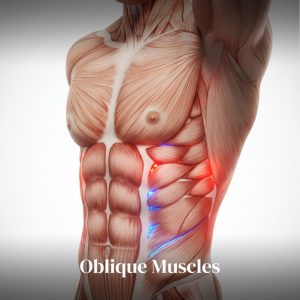
Your oblique muscles sit along the sides of your abdomen, wrapping gently around your torso like a supportive embrace. There are two main types: the internal oblique and the external oblique. Collectively, these are known as the internal and external obliques, and they form layered positions within the abdominal wall muscles, contributing to the overall structure and function of the abdominal wall. Both are part of your larger family of abdominal muscles, working together to support posture, protect your spine, and allow for fluid movement.
The external oblique muscle is the most visible, located just beneath the skin on each side of your waist. Its muscle fibers run diagonally downward, forming part of that signature V-shape people associate with core definition. The external oblique attaches to the iliac crest, costal cartilages of the lower ribs, and its inferior border helps form the inguinal ligament, contributing to the anterior wall and rectus sheath. Beneath that lies the internal oblique muscle, a deeper layer of support. Its fibers run in the opposite direction, creating a woven pattern that stabilizes your abdominal wall and connects deeply with your breath.
When these two layers work in harmony, they support every twist, bend, and breath. They’re involved in everything from tying your shoes to rotating your torso. They also help maintain intra abdominal pressure, which protects your spine and supports the internal organs. Together, they act as nature’s corset—powerful, flexible, and essential. The functions of the oblique muscles include trunk rotation, lateral flexion, abdominal compression, and stabilization of the spine.
Knowing how these muscles function helps you move better, breathe deeper, and live more mindfully. It’s not about having a flat stomach—it’s about having a body that moves with grace, resilience, and strength from the inside out. Understanding the anatomy gives you insight. But respecting how it feels? That gives you wisdom.
The Gentle Power of the Obliques in Everyday Movement
You use your oblique muscles more often than you think. Every time you reach for something on a shelf, turn to look behind you, or even laugh deeply—your obliques are engaged. They support your spine, protect your back, and allow your torso to twist and bend with ease. These aren’t flashy movements, but they’re foundational ones.
Because of their location and design, these muscles help bridge your upper and lower body. They help stabilize your pelvis during walking and support your spine during standing. In this way, they influence your posture and your balance. The obliques work in concert with other muscles, such as the quadratus lumborum and iliopsoas, to maintain posture and balance. Weak obliques can lead to poor alignment, which may contribute to discomfort in the back, hips, or even the knees. That’s why strengthening them—gently and consistently—can feel so supportive in daily life. Gentle, consistent movement helps build muscle, which supports your ability to perform daily activities with greater ease and reduces the risk of injury.
But strength doesn’t mean strain. You don’t need to power through intense workouts to activate these muscles. Gentle, intentional movement—like side stretches, mindful rotations, and breath-focused core engagement—can do wonders. The goal is to support your body’s natural rhythm, not fight against it. Your obliques work best when you move with awareness, not aggression.
As you begin to pay more attention to your oblique muscles in daily movement, you may feel more grounded. More connected. The small motions of life—twisting to buckle a seatbelt, bending to pick something up—become invitations to move with care and presence. In that awareness lies the quiet, sustainable power of your core. That’s where transformation begins—not with tension, but with trust.
How Your Obliques Support Breathing and Digestion

Your oblique muscles do more than just help you move—they support your breath and inner calm. These muscles play a key role in respiration by helping to regulate the expansion and contraction of your rib cage. As you breathe deeply, the obliques assist in controlling the pressure inside your abdomen, while the chest rises and expands with each inhalation. This allows your lungs to function fully, and your breath to become more expansive and nourishing. Understanding the surface anatomy of the chest and abdomen can help you locate and engage the oblique muscles more effectively during breath-focused exercises.
This intra abdominal pressure is important. It helps stabilize your spine and support the surrounding organs. When the obliques engage gently during exhalation, they assist in emptying the lungs and activating the deep core. This not only improves breathing but also strengthens your abdominal wall over time. It supports posture, encourages better alignment, and can even help reduce physical stress.
There’s also a quiet connection between these muscles and digestion. When your core is stable and aligned, your internal organs have more space to function properly. Movement that strengthens the obliques also encourages healthy circulation and may reduce sluggishness in the digestive system. Breath-centered movements help stimulate the diaphragm, which in turn supports digestive flow.
Breath-focused core exercises, gentle twists, and posture awareness all play a role in supporting this harmony. It’s a beautiful reminder: your body is designed for balance. By caring for your oblique muscles, you’re not just building strength—you’re nurturing your breath, your energy, and your well-being from the inside out. This is core strength that supports your whole life, not just your workout.
The Nerve Supply: How Your Brain Talks to Your Obliques
Your oblique muscles don’t work in isolation—they’re part of a beautifully coordinated system, with your brain sending signals through a network of nerves to guide every movement. The external oblique muscle, in particular, receives its nerve supply from the lower five intercostal nerves and the subcostal nerve, all branching from the lower thoracic spine. These nerves are like messengers, carrying instructions from your brain to the muscle fibers, telling them when to contract, relax, and support your trunk.
This nerve supply is what allows your external oblique muscle to respond instantly when you twist, bend, or stabilize your abdomen. It also helps the external oblique work in harmony with other abdominal muscles, like the internal oblique and transversus abdominis, to maintain intra abdominal pressure and support your abdominal wall. When these signals flow smoothly, your movements feel coordinated and strong.
Understanding this connection is especially important if you ever experience an oblique strain or abdominal wall injury. Sometimes, nerve irritation or injury can disrupt the way your muscles contract, leading to discomfort or weakness. That’s why tuning into your body’s signals—like pain, tingling, or changes in movement—can help you catch issues early and seek the right care. Your nerves and muscles are always in conversation; listening to that dialogue is a powerful way to support your core health.
Blood Flow Matters: How Circulation Fuels Your Core
Just as your nerves guide your muscles, your blood supply fuels them. The external oblique muscle relies on a steady flow of oxygen and nutrients delivered by the lower intercostal arteries and the deep circumflex iliac artery. These vessels weave through your abdominal wall, nourishing the muscle fibers so they can perform at their best. The superficial epigastric artery, branching from the femoral artery, also plays a role in keeping your external oblique and other abdominal muscles healthy.
When you engage in core exercises or any physical activities, your body naturally increases blood flow to the external oblique muscle and its neighbors. This boost in circulation helps your muscles function efficiently, recover from effort, and adapt to new challenges. It’s one of the reasons you might feel warmth or a gentle “burn” during exercise—your muscles are being fed and energized.
On the flip side, if blood flow is restricted—due to health conditions like atherosclerosis or even prolonged inactivity—the function of your external oblique and other abdominal muscles can suffer. That’s why regular movement, mindful exercise, and even gentle stretching are so important for keeping your core strong and resilient. Good circulation is the foundation for muscle health, healing, and growth—so every time you move, you’re supporting your body from the inside out.
READ ALSO: 6 Deep Core Exercises Truths
Common Symptoms of Oblique Muscle Strain — And What to Watch For

Pain is often our body’s way of asking us to slow down and tune in. Oblique muscle strain is one of those signals you don’t want to ignore. These muscles do so much for you daily, and when they’re overworked or injured, they speak up. Understanding what to watch for can help you catch it early and care for yourself with intention. Here are some common signs to look for:
- Sharp or aching pain along the side of your abdomen or near the rib cage.
- Discomfort when twisting, turning, or bending the torso.
- Tenderness in the abdominal wall, especially when touched.
- Pain during deep breathing, coughing, or laughing.
- Soreness after activities involving core movement.
- Muscle spasms or tightness around the waist or lower ribs.
- Swelling or bruising in more serious cases, which may be related to impaired venous drainage in the affected area.
Being aware of these symptoms allows you to respond with care rather than pushing through. If you feel persistent discomfort or worsening pain, it’s wise to speak to a healthcare provider. Patients who experience ongoing symptoms should seek a thorough patient assessment to rule out more serious conditions and ensure proper management.
Remember, pain is not a punishment. It’s a guidepost. Your body is simply asking for rest and attention. You don’t need to power through. You need to listen. When you treat discomfort as a message, you create space for healing, wisdom, and a more mindful return to movement.
Smart Ways to Prevent Oblique Injuries
Caring for your oblique muscles means more than just building strength—it’s about moving wisely and preventing injuries before they occur. Oblique strain and abdominal wall injuries can happen when the external oblique muscle or other abdominal muscles are pushed too hard, too fast, or without proper support. The good news? A few mindful habits can make a big difference.
Start with core exercises that gently strengthen the external oblique muscle and the rest of your abdominal wall. Planks, side bending, and controlled twists are all excellent choices. Always warm up before diving into physical activities, especially if you’re lifting, playing sports, or trying new movements. A proper warm-up prepares your muscles and helps prevent sudden strains.
Pay attention to your technique, whether you’re at the gym or just moving through daily life. Avoid jerky motions or overextending your trunk, and remember that quality matters more than quantity. Incorporate exercises that support your hip bone and pelvis—like squats and lunges—to build a stable foundation for your core.
If you’re recovering from an injury or want extra support, physical therapy can be a valuable resource. A healthcare provider or therapist can guide you through safe, effective routines that protect your abdominal wall and help you regain function. By moving with intention, listening to your body, and making core care a regular part of your routine, you’ll keep your oblique muscles—and your whole self—strong, balanced, and injury-free.
The Right Way to Warm Up Before Core Workouts
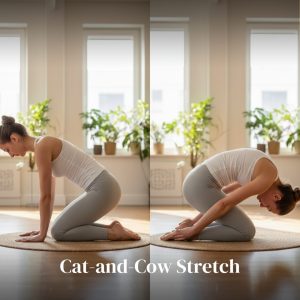
Warming up is more than a step on your checklist—it’s a ritual of respect. It prepares not just your muscles, but your whole self for movement. Especially when it comes to the oblique muscles, a mindful warm-up can protect you from injury and create a smoother path to strength. Think of it as a conversation with your body that says, “I’m here, and I’m listening.” Here are a few steps to guide your warm-up:
- Deep Breathing (1–2 minutes) Inhale through your nose, expanding the rib cage. Exhale slowly, gently engaging your abdominal wall.
- Standing Side Bends (8–10 reps per side) Reach one arm overhead, bending to the opposite side. As you move, focus on maintaining a straight line from your head to your tailbone to ensure proper alignment and maximize the stretch through your obliques.
- Torso Rotations (10–15 reps) Slowly twist your torso side to side while keeping your hips steady. Let the movement come from the core.
- Cat-Cow Stretch (8–10 reps) On all fours, alternate arching and rounding your back to loosen the spine and warm the abdominal wall. During the transition between movements, try to find a straight line from your head to your tailbone before moving into the next position.
- Shoulder Rolls or Arm Circles (optional) Light upper body movement encourages flow and full-body readiness.
These few minutes of gentle movement allow your nervous system to transition from stillness to action. You begin to bring blood flow to the right places, invite focus into your center, and build a foundation for mindful strength. A warm-up doesn’t need to be long—it just needs to be honest. Meet yourself where you are. That’s where the magic happens.
Simple Core Workouts to Strengthen Your Obliques

You don’t need to push yourself to the limit to build strength. The truth is, when it comes to your core—especially your obliques—it’s the steady, mindful movements that create lasting change. Think of your workouts not as something to survive, but as something to savor. Here are a few simple exercises that strengthen the oblique muscles and invite connection. Here are five supportive, beginner-friendly exercises:
- Side Plank (10–30 seconds per side, both right and left side) Targets the external obliques and improves overall lateral stability. Modify with knees down if needed. Be sure to perform the exercise on both the right and left side to engage the muscle bilaterally.
- Torso Twists (2 sets of 10–15 reps) Sit or stand. Gently rotate from the waist. Hold a light medicine ball for added focus.
- Side-Lying Leg Lifts (2 sets of 10–12 reps) Strengthens the obliques along with your hips and lower abdomen. Keep movements slow and mindful.
- Standing Oblique Crunches (2 sets of 12 reps per side, both right and left side) Lift your knee to meet your elbow on the same side. Perform on both the right and left side for balanced activation of the oblique muscles.
- Modified Bicycle Twists (10–15 slow reps) Lie on your back. Alternate elbow to opposite knee. Keep it controlled and supported.
As you begin to practice these movements, go slow. Pay attention to how each rep feels, not just how many you do. Choose 2 or 3 to start with, and practice them a few times each week. This isn’t about chasing perfection. It’s about building a foundation of strength, rooted in kindness. And that kind of strength lasts.
Mindful Core Routines You Can Actually Stick To

Consistency doesn’t come from pushing yourself harder—it comes from creating routines that feel doable, nurturing, and grounded in your real life. That’s why building a mindful core routine is one of the most powerful ways to support your oblique muscles. When you shift from “all or nothing” to “just enough today,” something shifts inside you too.
A mindful core routine isn’t about doing more, it’s about doing what matters with intention. Maybe it’s ten minutes in the morning before your day begins. Maybe it’s five minutes of movement while your tea steeps. It could be a few stretches on the mat or even some standing twists while listening to music. The point is to make it yours—simple, sustainable, and soothing. Here are a few gentle core routines that are easy to maintain:
- Morning Breath & Twist (5–7 minutes) Begin your day with deep belly breathing and seated torso twists to wake up your core gently.
- Standing Flow (5–10 minutes) Side bends, standing crunches, and forward folds strung together in a soft flow for energy and focus.
- Mat Reset (10–12 minutes) Side planks, cat-cow, and leg lifts on a mat—perfect for the evening wind-down or mid-day reset.
- Desk Break Routine (3–5 minutes) Seated side stretches and shoulder rolls you can do between tasks to refresh your posture.
- Weekend Deep Core Practice (15–20 minutes) A slow, nourishing sequence with more reps, deeper breathing, and a focus on full-body grounding.
It doesn’t matter which one you choose—it matters that it fits into your life in a way that feels good. Consistency doesn’t come from perfection. It comes from kindness and rhythm. Choose what soothes your body and uplifts your energy, and you’ll find yourself returning to it again and again.
The Emotional Side of Core Strength
Your core isn’t just physical—it’s emotional. It’s where we often hold stress, fear, and even unspoken tension. The area around your abdomen and pelvis is deeply connected to your sense of safety and self. When this space is tight or overwhelmed, you may feel anxious, disconnected, or easily fatigued. That’s why building core strength can feel deeply healing—not just for your body, but for your spirit.
Gentle movement can help release that tension. When you engage the obliques with breath-led awareness, you invite a sense of calm and control into your nervous system. Each twist, each side stretch, each mindful crunch becomes more than physical—it becomes emotional release. This is why people often feel lighter, more grounded, or even unexpectedly emotional during or after core-focused practices.
Bringing intention to your core workouts also creates space for emotional regulation. It offers you a container to safely process stress and rebuild inner resilience. This is strength that goes beyond muscles. It’s strength that supports how you move through your day, your relationships, and your inner world.
So next time you hold a side plank or gently rotate through your waist, notice what you feel—not just physically, but emotionally. Honor that. Your core is not a problem to fix. It’s a place to connect, to soften, and to empower.
Signs You’re Making Progress — Beyond the Mirror
So much of the fitness world focuses on external change. But real progress—the kind that lasts—happens inside. When you strengthen your oblique muscles with intention, you’ll begin to notice shifts that go far beyond your waistline. These are the signs that tell you your practice is working, even if no one else sees them yet.

Instead of asking, “Do I look different?” try asking, “Do I feel more supported?” The beauty of oblique-focused care is that its benefits show up in the quiet moments: how you sit, how you breathe, how you carry yourself through the day. Here are a few subtle, yet powerful, signs you’re making progress:
- Better Posture. You naturally sit and stand taller with less effort.
- Easier Breathing. Your breath feels deeper, fuller, and more nourishing.
- Less Discomfort. Back pain, side tightness, or tension during movement begins to ease.
- More Balance. You feel steadier on your feet, especially during walking or standing exercises.
- Increased Awareness. You notice how your body moves, when it needs rest, and when it feels strong.
- A Calmer Mind. Gentle core work brings a sense of clarity and calm you carry into daily life.
- Self-Trust. You begin to trust your body more, respond to it more kindly, and appreciate what it can do.
These signs are worth celebrating. They tell you your body is responding, adjusting, and growing stronger from within. Don’t rush the process. Let these inner changes lead the way.
Your Next Step: A Sustainable Oblique Care Plan
You’ve come a long way. Not just in understanding your oblique muscles, but in shifting how you relate to your body. Now it’s time to turn that insight into a gentle plan—a rhythm you can return to again and again. Because real strength doesn’t come from what you do once. It comes from what you return to with presence and care.
Think of this next step not as a finish line, but a soft beginning. You now have the tools to build strength without stress. You’ve learned how to warm up, listen to your symptoms, breathe with awareness, and move in ways that feel nourishing—not punishing. Let’s pull it together in a simple plan you can follow at your own pace.
This isn’t about doing everything perfectly. It’s about returning to your body with kindness and trust. Let your oblique care plan be a reminder that you are already enough, just as you are—and every time you move with intention, you honor that truth.
This is how strength becomes part of your life. Not through force, but through presence. You’re already on your way.









